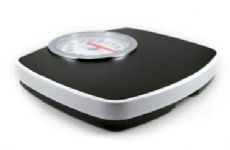|
Vitamin D is a hot topic in nutrition, and one that's become a focus in menopausal bone health. There are two forms of the vitamin, D2 and D3 (cholecalciferol), with D3 the form best metabolized by the body. Vitamin D is found in foods such as fish, eggs, fortified milk and the old remedy, cod liver oil. Although this nutrient is found in foods, the greatest source for obtaining vitamin D is through the skin. When bare skin is exposed to ultraviolet light, it synthesizes vitamin D3 that is then stored in the liver. You only need 10-15 minutes of sun exposure during peak sun hours (between 10 a.m. and 2 p.m. in most locations) during the summer months to produce up to 10,000 IUs of the nutrient. After that short exposure you can continue with safe sun habits and slather on a broad-spectrum sunscreen. How much vitamin D do you need? According to SparkPeople's resident dietitian, Becky Hand: In the last few years, many experts and health organizations urged the Institute of Medicine to revisit the DRI set for vitamin D and re-evaluate the latest research. After a thorough review, the recommendations for vitamin D did go up by two or threefold in some age groups. The current Recommended Dietary Allowance for vitamin D (as of November 2010) is:
Read more: How to Get Your Daily Dose of Vitamin D Current research on vitamin D and its role in health suggests that there may be a correlation between low blood levels of this nutrient and the development of diseases such as osteoporosis, some cancers, diabetes, cardiovascular disease, hypertension and even obesity and depression. There are estimates that up to one half of all Americans are deficient in this vitamin, with an increased risk of deficiency in people who have one or more of these risk factors:
Postmenopausal women should determine their vitamin D blood level by having their healthcare provider order the 25-hydroxy vitamin D test. If your test level is under 32 mg per milliliter (some healthcare providers consider numbers higher that this to be in the low/deficient range), you are considered deficient and supplementation of the vitamin and follow up testing is needed. There's conflicting medical discussion regarding what constitutes a deficient, low or normal level of vitamin D, as well as what is a safe and effective supplement dose. Many healthcare providers feel that the current guidelines for what constitutes normal 25-hydroxy vitamin D level and recommended daily intake are outdated and need revision. A prospective cohort study of 72,000 post-menopausal women in the U.S. reported that the women who took in at least 600 IU/day of vitamin D3 (via diet and supplement) had a 37% decreased risk of osteoporotic hip fracture than the women who consumed less than 140 IU/day. The data increasingly suggests that the threshold level of vitamin D3 daily intake needs to be at least 700-800 IUs, with several studies finding similar threshold levels needed for bone protection. Of interest, when vitamin D3 supplements were discontinued in study participants, bone density gains were lost within two years. The steps to determining your optimal daily vitamin D requirement are:
Do you track your vitamin D intake? (You can easily track it on the SparkPeople Nutrition Tracker.) Do you know if you're getting an adequate amount of vitamin D? Have you ever been tested? |
Related Entries
More From SparkPeople
|











.jpg)










.jpg)
